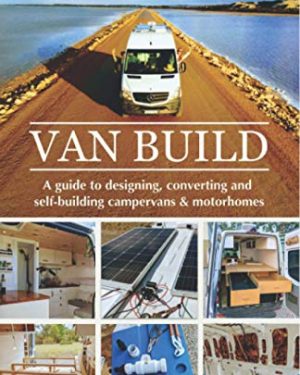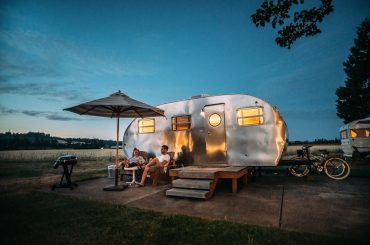Over the past few months I have been trying to sell my 1991 Ford E250 Class B camper van and become somewhat frustrated by the unrealistic expectations of the people who contact me. There seems to be a lot of people who want to get into vanlife these days, but do not have a firm understanding of the costs of a vehicle for this lifestyle. Some people think a camper van with all of the amenities needed for vanlife (insulated walls, plumbing, electrical systems, solar panels, generators, etc.) can be had for $2,000 to $4,000 USD. The solar system alone could be stripped off my camper van and sold on eBay for that price range, let alone its generator!
On several occasions I’ve had people claim to me that “I can just buy a cargo van and install all of this stuff myself for cheap” and my reply is always to just chuckle and say, “Okay, go do that then.” Because I have been living this lifestyle for many years I know the true costs of these type of conversions and that they will not be able to do what they think they will.
I’ve decided to write this article as a guide to help people understand the actual costs involved in converting a cargo van into a campervan that can be used for stealth camping / boondocking. Searching online I could find many guides that were either very clearly not written by someone who has actually done this or by someone who is trying to sell “blueprints”, or worst has split their guide up into a bunch of different articles scattered across their blog. This RV Living Guide article is intended to be a one-stop guide to the costs involved in the conversions. For instructions on how to actually do these conversions you can watch many YouTube tutorials others have produced.
The costs of conversion will be broken down into several subsections and their estimated costs,
- Cargo Van Costs: $10,000 to $36,000
- Insulation, Sound proofing and Electrical Wiring Installation Costs: $5,000
- Solar Power System Installation Costs: $3,000 to $6,000
- Plumbing Installation Costs: $3,500 to $4,500
- Heating and Cooling Installation Costs: $500 to $4,000
- Cabinets, Bed and Internal Storage Build Costs: $1,000 to $4,000
Total estimated costs to convert a cargo van to a campervan: $23,000 to $60,000
You can use the directory links below to quickly access each section.
Cargo Van Costs – $10,000 to $36,000
Brand new model cargo vans sell for around $20,000 to $36,000; for example a new Mercedes Benz Sprinter sells for around $36,000.
What you will end up with a cargo van is a good frame for building a customized RV. It will not have insulated walls, any plumbing, any electrical wiring suitable for the home battery system or generator, no propane system, etc. etc.
You can of course purchase a used cargo van to get a cheaper price point, but you generally will not find a cargo van in any good mechanical condition for under $10,000. This is because cargo vans are primarily a commercial vehicle and typically are not purchased by consumers. As cargo vans are in high demand for companies in every part of the United States and Canada they tend to sell for at least $10,000 if they have good engines, brake systems and so on. It is only cargo vans in poor mechanical condition that are sold for less, overwhelmingly cargo vans which were driven many hundreds of thousands of miles commercially to do deliveries and had poor maintenance by cheapskate delivery companies.
This is very important to understand about cargo vans when you are considering getting into van life. Cargo vans are a high in demand vehicle which many companies are seeking to acquire for their fleets and you will almost never find one under $10,000 that isn’t going to need several thousand dollars worth of repairs. It is sometimes cheaper for a company to simply buy another cargo van than to repair the issues that are mechanically wrong with them. They sell the busted up cargo vans for dirt cheap prices to wholesalers, who then sell them on used car lots to unsuspecting private citizens who believe they are getting a great deal. So you must be weary of cargo vans listed at prices under $10,000 being sold in the market, as you could end up with a cargo van that will need another $10,000 or more in repairs to be a vehicle you could reliably drive around the country in.
The last thing you want is to be stuck in the middle of nowhere and need to pay $2,000 or $4,000 for a tow to a mechanic shop that will charge you another several thousand dollars for repair work, since they are also in the boonies and can get away with price gouging travelers. What I am telling you is especially true of tow companies and mechanic shops based in the desert states of Arizona, New Mexico and Western parts of Texas near El Paso. If you break down in any of these areas you will pay three or four times more for repairs and towing than you normally would because they take advantage of travelers who break down in the deserts.
You can alternatively purchase a camper van that is much older, such as 10 or 20 years older. These, again, will need significant repairs to make them road trip worthy if they still have the original engines and other parts. Common models for this type of renovation are Volkswagen model camper vans, which are an import vehicle with many of the replacement parts being very expensive. You must also consider that fewer mechanics are available who have the knowledge to work on them. This significantly increases the costs of maintenance on the van and I do not recommend going this route, regardless of the ‘cool factor’. If you must choose an older camper van it is recommended to have one manufactured by Ford, where there is a surplus of parts available for repairs.
(On another note, do not put all of your faith in towing insurance to bail you out of car engine trouble either, as MANY tow companies in the boonies of the country refuse to do business with Triple A because they frequently are late with payments to smaller tow companies in more rural areas. So you will find your towing insurance is useless and you will need to pay out of your own pocket to get towed if you break down. This is why it’s so important to have a reliable engine in your camper van.
Triple A is the most popular provider of towing insurance in the United States, with many insurance companies outsourcing their towing assistance fulfilment to Triple A. This is something you must be aware of as a full time RVer in the USA.)
So the price of getting a cargo van suitable for full time RV living is somewhere between $10,000 and $36,000, with $10,000 the price for a good used van. Even if you purchase a used van cheaper than $10,000 you should expect to invest several grand into repairs to its engine and other mechanical parts (the last thing you want is an axle falling off while driving down a highway or the brake system going out on you; both events have happened to me personally with used older vehicles in the past).
Insulation, Sound Proofing and Electrical Wiring System Installation Costs – $5,000
The insulation process must be done to a cargo van before you install any interior paneling to it. Without any insulation it will not retain heat at night or in the winter, nor will it block out heat in the summer. Sound proofing must also be installed unless you want everyone to hear what you are doing inside your camper van in the dead of night. Some people convert vans without doing any insulation then wonder why they feel so miserable in the cold or heat while living inside the van. The reason it because it has no insulation. Cars and vans usually do not come with the kind of insulation necessary for living inside one when the engine is turned off.
Because people usually have the engine heater or air conditioner running when they drive the car, they don’t notice this poor insulation until they try to live inside one full time.
FatMat Self-Adhesive Rattletrap Sound Deadener is popular and costs around $150 for a 50 sq. foot roll and you will need two rolls as the interior of the average cargo van is around 70 to 80 sq. ft. of space.
Insulation for usage in a camper van is the same as for a house so expect to spend just under a dollar per sq. ft. of insulation. So insulating a 80 sq. foot area costs around $80 if you do it yourself.
Next we have electrical wiring. Without going too much into the specifics of how to do all of this installation for electrical home system, you will need a battery bank, wiring, fuses, breakers, AC to DC chargers, and a generator for a basic setup. It will cost around $2,000 for a Onan generator for usage in an RV that can run off your fuel tank, but you’ll still need to install it into your fuel tank. If you want shore power hookups to use at a campground site then you’ll need to be able to charge your house battery from a 120V power source so you need a multi-stage charging profile adapter that can provide power to 12V loads like a fridge when connected to shore power.
All combined the insulation, electrical wiring and home battery system setup will cost around $5,000 or more. While some people do cheaper setups that are purely solar driven, it also means they don’t have the ability to use shore power hookups or generators for when there is diminished sunlight in the sky, such as in the winter months or very rainy seasons in certain states.
And this price costs is just for the general electrical stuff that commercially manufactured Class B RVs come with. If you do want solar power that is an additional expense.
Solar Power System Installation Costs – $3,000 to $6,000
Installing a solar power system requires at least two 100W solar panels to be installed to the roof correctly in such a way that it does not cause leaks from the rain. A poorly installed solar panel system will cost you the price of a new roof, which will be at least a grand. So you want to make sure you install it correctly and seal it properly.
The solar panels must be connected through a solar controller and hooked to a deep cycle battery system and you will want somewhere between two to four of these batteries, each one costing between $200 to $500 depending on their storage capacity.
You will also need pure sine wave inverter that can put out at least 1000W to run basic things like charge your laptop and phone; these models cost around $500. But if you want to run many appliances like freezers or use electric cooking appliances you’ll need an inverter that is at least 4000W or more and that will cost over a thousand dollars.
In total the solar system suitable for boondocking with gaming systems, laptops, etc. but no freezer or heating system it will cost you around $1,500.
If you want to power higher end devices like a freezer or run electric cooking appliances it will cost double that for the higher end inverters, somewhere around $3,000 to $6,000 depending on how many batteries you add and what inverter you select.
So in addition to spending $5,000 to add electrical wiring to your cargo van, expect to pay another $3,000 to $6,000 for the solar system. This is of course if you do the installation yourself; it will cost a lot more to hire someone to do the install labor for you.
Plumbing Installation Costs – $3,500 to $4,500
The plumbing installation costs for adding septic and water lines to an RV will be another few grand. Some people claim that using compost toilets are great for a camper van and while these are cheaper than a standard RV toilet system, these people are in my opinion crazy — and when they claim composting toilets never smell they are outright lying to people.
All composting toilets smell. Anyone claiming they do not is a liar.
If you install a compost toilet inside your camper van it will smell like a cow barn.
So, if you like the smell of urine and need to empty your toilet every couple days or get sick from toxic fumes, by all means install a composting toilet into your camper van. For everyone else who isn’t insane you need a proper RV septic system with good ventilation for the fumes so you do not get sick from your own fecal matter and urine.
RV septic black tanks cost $200 to $300 and that is just if you only use one tank for both black and grey water, which is recommended to save on costs — although keep in mind it will result in the tank filling up faster if you use a lot of water. You also need the toilet itself, which is a plastic gravity toilet and these cost around $200.
If you want a shower system, then you will need to install the toilet inside the wet bath, similar to how a tiny home is constructed. This setup will run about $1,000 but can be more if you want to install another sink in this area.
City water line hooks up are cheaper to install, just under $100 for city but people often forget you need to have a water pump this is connected to. A low-end pump by itself will cost about $100. Then you need a water heater for an RV which will run you around $800 to $1,000. Fresh water tanks are cheaper than black tanks, costing only about $200.
Many people focus on sinks for RVs but these really are quite inexpensive. Small stainless steel sinks can be had for $40 and after you factor in the cost of other piping and the faucets, you’re only spending about $200. The real expensive aspects is the tank, the pump and the hot water heater.
You also need an RV waste line valve to be able to control when you dump the tank, and this costs around $40.
So expect to spend about $3,500 to $4,500 for the plumbing and water related aspects of your van conversion.
Heating and Cooling Installation Costs – $500 to $4,000
If you want propane powered heating and cooking you need a propane line system and appropriate valves. If you know what you are doing and are confident you can install a safe system that will not turn your campervan into a bomb then you can do this for around $500. If you pay someone who is an expert to do it so you can be confident you will not explode inside your van then it will cost $2,000 to $3,000.
For an air conditioning unit suitable for camper van it will cost around $500. If you want your air conditioner to also have a heat pump however then you will pay over $1,000.
Cabinets, Internal Storage and Bed Build Costs – $1,000 to $4,000
The interior is the least expensive aspect of a cargo van conversion but the thing most people are fixated on. This can give people the mistaken impression that the interior décor of a camper van is very expensive to make. In reality the interior is primarily pine board, cheap stick on floor tile or carpet, and screws. You do not need a lot of carpet or flooring either, as it is a small walk space inside the cargo area of a van once you have installed a toilet and bed into it.
A nice looking interior with a bed that has under storage areas with cabinets can be assembled yourself with some power tools in a few hours of work with a few hundred dollars of pine wood. If you pay someone to do the work for you, it may cost about $1,000 to $3,000 depending on how fancy you want things to look.
The most expensive thing is honestly going to be your bed mattress. I recommend a good memory foam mattress such as the Tuft and Needle Queen size mattresses I sleep on in my RVs, which cost about $500 to $600.
So I’d say it costs anywhere from $1,000 (if you do the work yourself) to $4,000 (if you pay someone else) for making a suitable interior décor with cabinets space for your camper van conversion. It is one of the least expensive aspects of the conversion.
Final Thoughts on Converting a Cargo Van into a Campervan
As you can see the price to do a custom campervan conversion ranges from $23,000 to $60,000. This is why it makes more sense to purchase someone else’s used class B RV that has a good engine and make slight adjustments to the interior to make it how you want it, rather than build your own from scratch. It is much cheaper to alter the interior of a pre-existing RV than to install all of the brand new components you will need to make a generic cargo van suitable for full time living.
Yet the extra expense can be worth it if you have specific desires in how you want your camper van to be for fulfilling your vagabond vanlife dreams. The choice is up to you.
A great book of instructions on how to convert a van to a camper is Van Build: A complete DIY guide to designing, converting and self-building your campervan or motorhome by Ben and Georgia Raffi. You should check it out if you’re interested in a good instructional book on how to do this type of conversion of a cargo van into a campervan yourself.
If you have any questions or comments feel free to leave them below.





